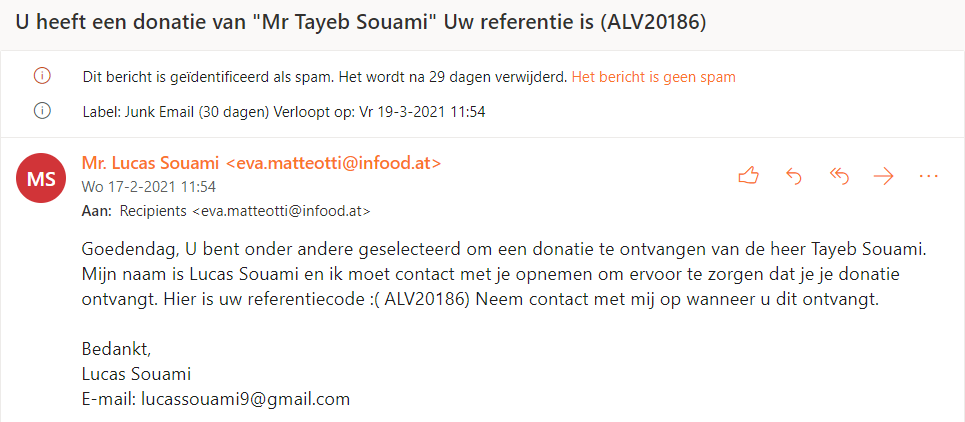.png)
Spam messages are not only disruptive, but can also be dangerous. Guard against spam with the following tips and receive fewer unwanted emails.
Receive less spam
Who doesn’t know them: emails from a Nigerian prince who wants to give you a fortune or emails from a bank where you are not a customer. It is junk e-mail, also known as spam. Spam is extremely disruptive and potentially dangerous. Because if you click on a link or attachment, you might get a virus or unknowingly hand over personal data to criminals. Every e-mail program has a built-in spam filter that stops these kinds of messages, but you can also protect yourself against spam e-mails to a certain extent.
An example of a spam message:

When is spam dangerous?
Junk e-mail is always annoying, but whether and when it becomes dangerous depends on what’s in the e-mail and what the purpose of the message is. The tip ‘Spam or phishing, what’s the difference?’ explains what types of spam there are.
Four tips for less spam
We give four tips to receive less spam from now on:
-
Do not put your email address online
Do not put your email address on a public online environment, for example on your own website or in a message on Facebook. The people behind spam automatically scan the internet for email addresses. Always private message anyone who needs your email address. And if you mention your e-mail address on a public site, do not write it with an ‘@’ but with, for example, ‘[apenstaartje]’. Or write ‘[punt]nl’ instead of ‘.nl’.
-
Use a second email address
You want to enter a contest or receive a free product. You often have to leave an e-mail address. The company may then bombard you with commercials or, worse, resell your contact information. That is not desirable. If necessary, create a second e-mail address especially for this type of purpose, which you can delete after a while. For example by creating an email alias.
-
Do not respond to chain letters
Also protect other people’s e-mail addresses. Sometimes you will get an email promising a price or warning about a scammer phone number. The message asks you to share the email with as many people as possible. This is often spam. Do not respond to the message or forward it to family and friends, because then the spammer will also get their email addresses.
-
Block spam senders
To prevent you from receiving new unwanted emails from the same address, you can block the sender. This works differently for each e-mail program. We have a description of this for Gmail, Outlook and Outlook.com.
What should I do with spam?
It’s okay to open a spam message. Feel free to view the content, but do not open attachments or links. If you are not sure about a message with a link, check that there is nothing strange in the url (without having to click on the link). Better yet: do not use the link in the e-mail, but go to the website of the so-called sender yourself.
It is smart to report spam messages. This allows the mail service to improve the spam filter. How to do this varies by email program, but usually you click on the three-dot icon and click on something like ‘report’, ‘mark as spam’ or ‘report spam’.